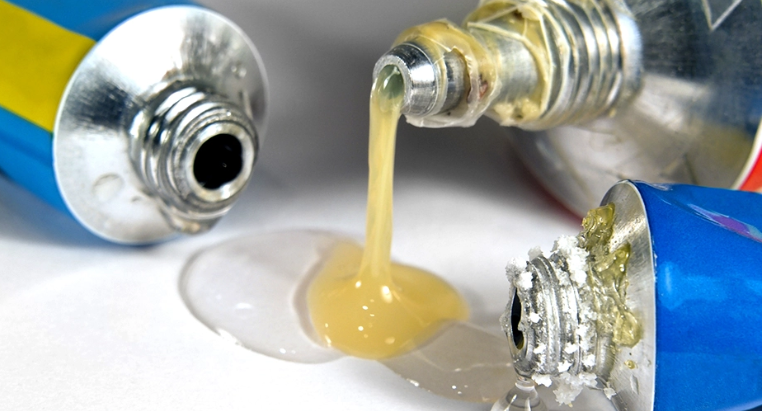What Are the Different Types of Adhesives?
Adhesive type
There are many types of adhesives, which can usually be classified as follows:
Source of materials
①Natural adhesive
It is derived from substances found in nature. Including starch, protein, dextrin, animal glue, shellac, hide glue, rosin and other biological adhesives; also includes mineral adhesives such as asphalt.
②Artificial adhesive
This is made of artificial substances, including inorganic adhesives such as water glass, and organic adhesives such as synthetic resin and synthetic rubber.

Use characteristics
①Water-soluble adhesive
Adhesives that use water as solvent mainly include starch, dextrin, polyvinyl alcohol, carboxymethyl cellulose, etc.
②Hot melt adhesive
It is a solid adhesive that is melted by heating. General thermoplastic resins can be used, such as polyurethane, polystyrene, polyacrylate, ethylene-vinyl acetate copolymer, etc.
③Solvent-based adhesive
An adhesive that is insoluble in water but soluble in a certain solvent. Such as shellac, butyl rubber, etc.
④Emulsion type adhesive
Most of them are suspended in water, such as vinyl acetate resin, acrylic resin, chlorinated rubber, etc.
⑤Solvent-free liquid adhesive
It is in the form of viscous liquid at room temperature, such as epoxy resin, etc. The adhesive is the medium between the label material and the bonding substrate and plays a connecting role. According to its characteristics, it can be divided into two types: permanent and removable. It comes in a variety of formulas, suitable for different surface materials and different occasions. Adhesive is the most important component in self-adhesive material technology and the key to label application technology.
According to raw materials
①MS modified silane
Modified silane polymer ends with methoxysilane. It was invented by Zhongyuan Group in 1978. The company is the only supplier of modified silane raw materials in the world. On this basis, Belgium Novan Technology has continued R&D and innovation. Produces a series of high-quality sealants and adhesives used in construction, industry, automobile transportation, civil use, etc.
②Polyurethane
The full name of polyurethane is polyurethane, which is a general term for macromolecular compounds containing repeating urethane groups on the main chain. It is formed by the addition polymerization of organic diisocyanate or polyisocyanate and dihydroxy or polyhydroxy compounds.
③Silicone
Silicones are commonly known as silicone oil or dimethyl silicone oil. The molecular formula is: (CH3)3SiO(CH3)2SiOnSi(CH3)3. It is a polymer of organic silicon oxide and is a series of polydimethylsiloxanes with different molecular weights. , the viscosity increases as the molecular weight increases.
According to packaging materials
①Paper-based material adhesive
Mainly including starch paste, dextrin, water glass, chemical paste, casein, etc.
②Plastic adhesive
Mainly include solvent-based adhesives such as styrene-butadiene rubber, polyurethane, nitrocellulose, and polyvinyl acetate; water-soluble adhesives such as ethylene-vinyl acetate copolymer, ethylene-acrylic acid copolymer; and emulsion-based adhesives such as vinyl acetate resin and acrylic resin. Adhesives; hot melt adhesives composed of thermoplastic resins such as polystyrene, polyurethane, polyacrylate, etc.
③Wood adhesive
It mainly includes animal glues such as bone glue, leather glue, kelp glue, casein, and blood glue; it also includes synthetic resin glues such as phenolic resin glue, polyvinyl acetate resin glue, and urea-formaldehyde resin glue; and it also includes plant glues such as soybean gum.
Adhesives and adhesives are a general term for non-metallic materials that can bond one solid surface to another solid surface due to surface bonding and internal forces (adhesion and cohesion, etc.).
According to use
①Industrial adhesives
It is mainly used in building materials and some packaging to achieve the connection between things.
②Adhesives for agriculture and forestry
It is mainly used for slope greening or other soil structure improvement, which can make the soil form a granular structure and achieve the effect of moisture conservation. At the same time, it can enhance soil permeability, prevent soil loss caused by surface runoff, improve soil permeability, conserve soil and fertilizer, alleviate and regulate soil water evaporation, and allow crops to grow better.

